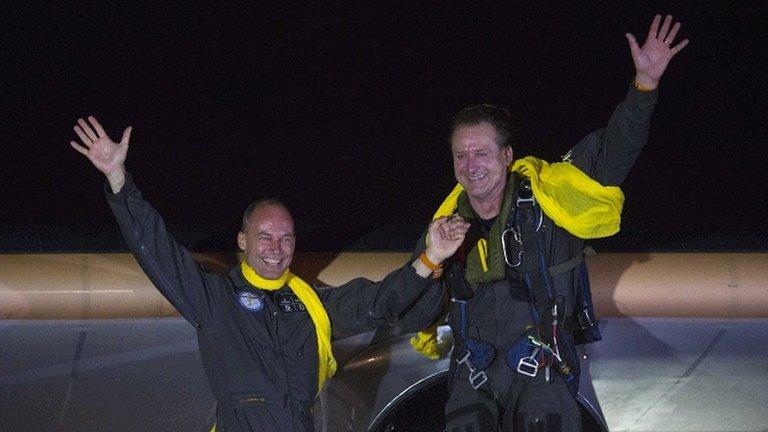Solar Impulse 2: Plane makes inaugural flight
- Published
Bertrand Piccard: "It's the wingspan of a jumbo jet and the weight of a car"
A solar-powered plane that will be taken on a round-the-world journey in 2015 has made its inaugural flight.
The Solar Impulse 2 vehicle, external lifted off from Payerne airfield in Switzerland at just after 03:35 GMT (04:35 BST; 05:35 CEST), returning two hours later.
It is a larger, upgraded version of the aircraft that flew across America last year, external with adventurers Bertrand Piccard, external and Andre Borschberg, external at the controls.
For this maiden flight, test pilot Markus Scherdel was in the cockpit.
He climbed to just under 6,000ft (1,800m), conducting a number of manoeuvres to prove the handling of the aircraft.
Mr Scherdel reported some early vibrations, but overall the mission outcome appeared very positive.
"The initial results are in line with calculations and simulations," read a later statement from the team.
Further flights will be conducted in the coming months in order for the experimental machine to attain certification.
"It's a great day for all the team of Solar Impulse," Mr Piccard told BBC News.
"An aeroplane like this is absolutely unique. And for the first time in history, we have an aeroplane that is flying with no fuel day and night, showing the incredible potential of the clean technologies - all these technologies that the world can also use in order to reduce the dependency to fossil fuel and to be cleaner and solve a lot of problems of pollution."
Pilot Andre Borschberg gives a guided tour of the solar plane
The carbon-fibre aircraft has a huge wingspan, which at 72m is wider than a Boeing 747 jet. And yet, the vehicle weighs only 2.3 tonnes.
The tops of the wings are covered by 17,000 solar cells, which drive four brushless electric motors at speeds of up to 140km/h (90mph).
During the day, the solar cells will recharge lithium batteries, which can then be used to keep the plane’s propellers turning through the night.
The first Solar Impulse plane set a number of world records, including the longest manned solar-powered flight at 26 hours, the first inter-continental flight in a solar-powered plane, and the greatest distance covered on a piloted solar-powered flight. (Autonomous solar-powered drones can stay aloft for weeks).
That last record was set during Piccard’s and Borschberg’s epic TransAmerica journey in May, June and July last year.
But as challenging as that effort was, it will be dwarfed by the difficulty and complexity of completing a global flight.
This is because it will have to include passage across the Atlantic and Pacific Oceans. The latter could take all of five days and nights to complete.
Only one pilot can fit in the cockpit. It has a reclining seat to make room for exercising and to permit Piccard and Borschberg, whoever is at the controls, to take short catnaps.
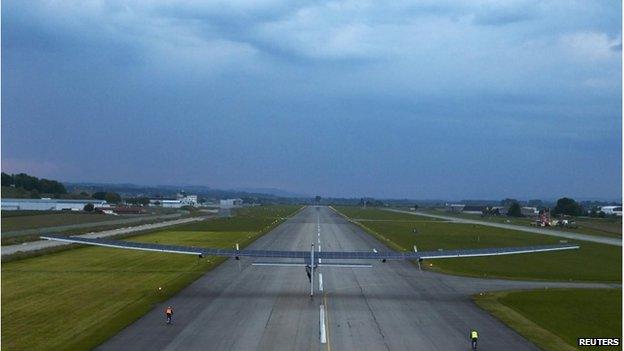
From take-off to landing, the flight lasted two hours and 17 minutes
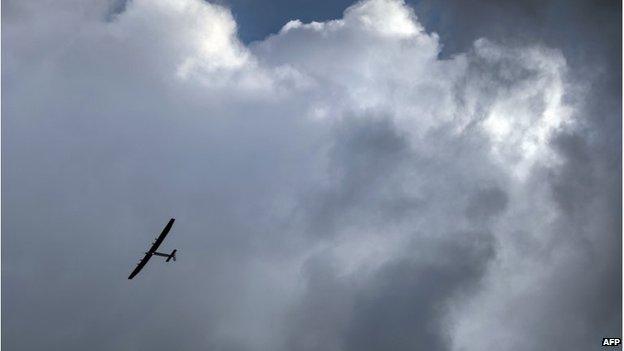
The highest altitude reached in the test flight was recorded as 1,670m (5,500ft)
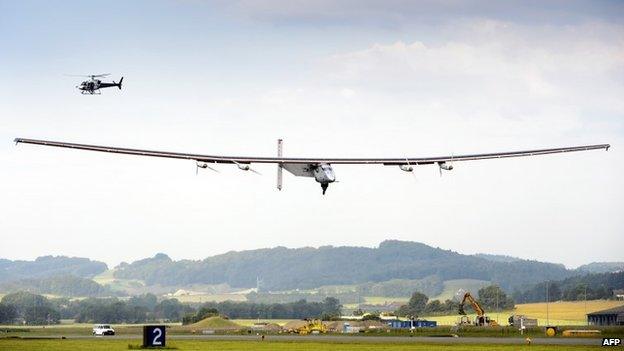
Apart from some early vibration, the flight overall was "in line with calculations and simulations"

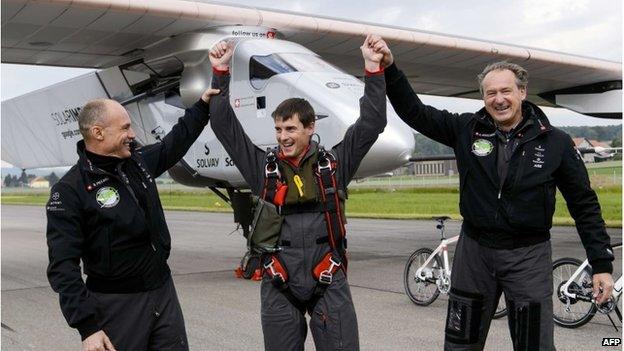
Bertrand Piccard (L) and Andre Borschberg (R) celebrate with Markus Scherdel (C)
Jonathan.Amos-INTERNET@bbc.co.uk and follow me on Twitter: @BBCAmos, external
- Published10 April 2014
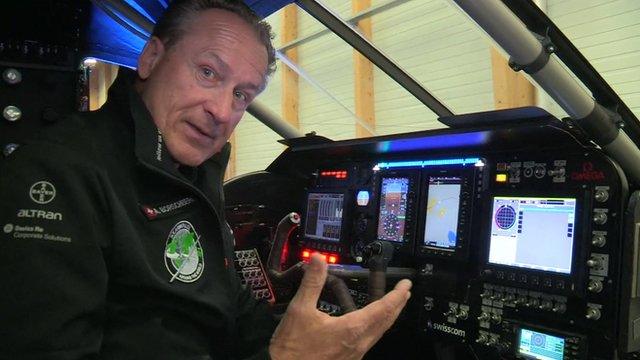
- Published7 July 2013
